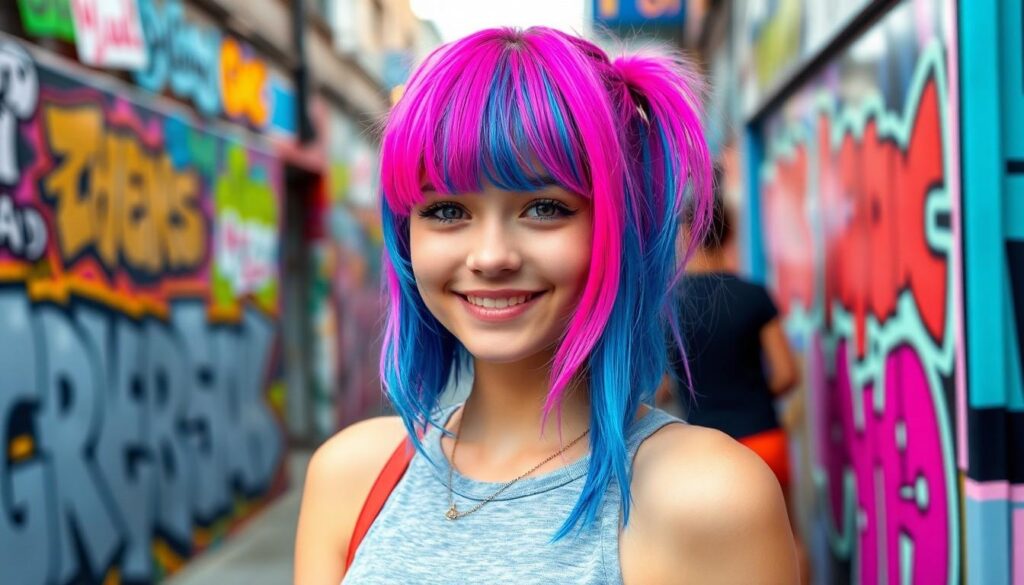Scene hair isn’t just a look—it’s a statement. With bold colors, choppy layers and dramatic bangs, this style lets us turn heads and show off our creative side. It’s all about standing out from the crowd and embracing the freedom to express who we are.
We know the thrill of switching up our look and making it unique. Scene hair gives us the perfect canvas for self-expression, whether we’re into electric blues or vibrant pinks. Ready to break away from the ordinary and make every day a little more daring? Let’s jump into the industry of scene hair and unleash our wildest style dreams.
Exploring The Origins Of Scene Hair Style
We find the roots of scene hair in the early 2000s when alternative youth cultures started making bold statements with their appearance. Music scenes like emo, pop punk, and metalcore played a major role, inspiring fans to experiment with their hair to reflect the emotion and energy in their favorite tracks. Social platforms such as MySpace let us share unique styles, making colorful, dramatic haircuts go viral across communities. Trendsetters like Jeffree Star and Hanna Beth influenced followers by posting their signature looks, complete with sharp layers and striking color juxtapositions. Salons across the US noticed rising demand for vibrant dyes and razor-cut layers, signaling that scene hair was becoming a nationwide phenomenon. We saw the style evolve rapidly as new subcultures and local trends put their own spin on the signature elements, helping scene hair stand out as a defining symbol of early internet-era individuality.
Identifying Key Features Of Scene Hair Style
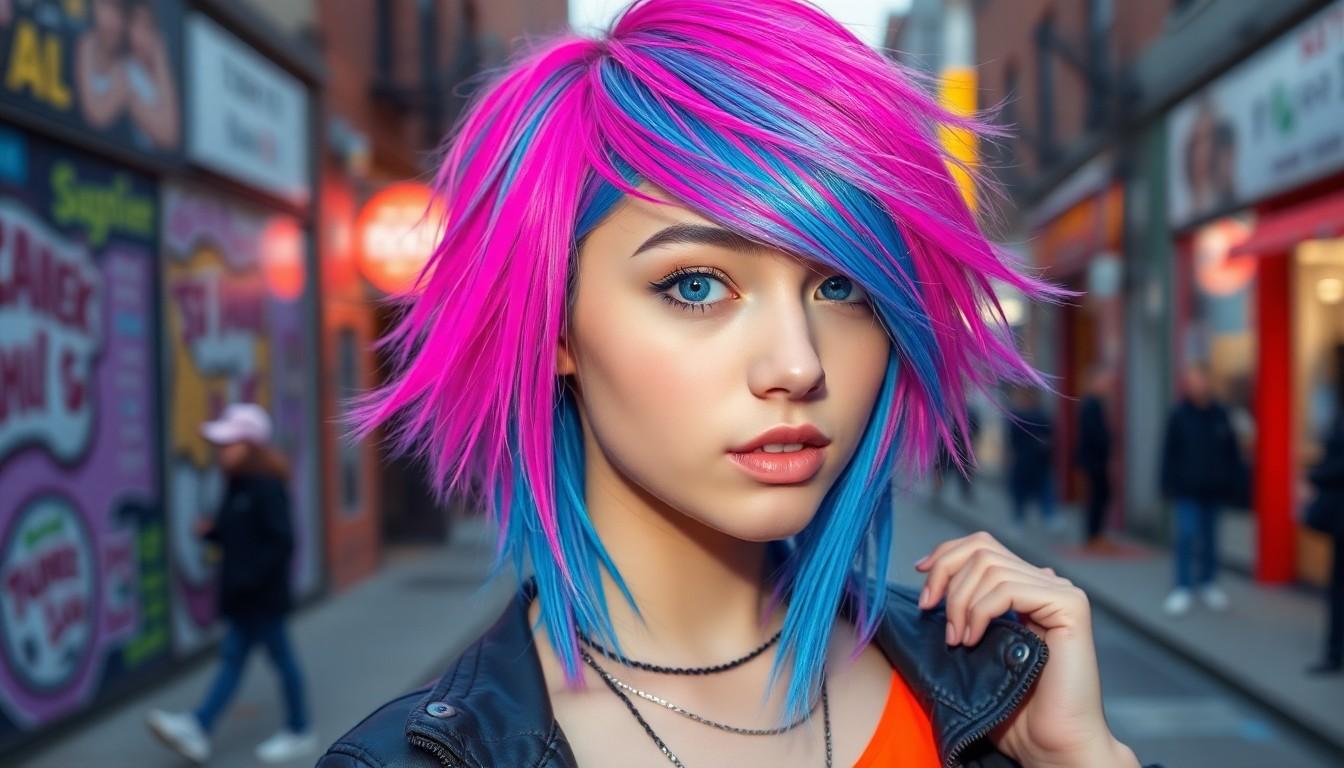
We can instantly spot scene hair by its fearless vibe and eye-catching details. Let’s break down the features that make this style stand out from the crowd.
Emphasizing Bold Colors And Highlights
Scene hair thrives on bold, contrasting color. We usually see intense shades like neon pink, electric blue, or lime green layered side by side. Many of us add chunky highlights or even stack several vibrant hues in one look, which definitely separates scene hair from the emo style’s darker approach. Stylists often recommend unexpected color combos to create that rebellious, unmistakable scene signature.
Understanding Choppy Layers And Volume
Sharp, choppy layers run the show in scene hair. In our experience, stylists cut layers at varying lengths for a chaotic yet calculated texture. Anyone aiming for this look can expect a top-heavy, voluminous finish, thanks to heavily teased roots and carefully shaped shags. Teasing techniques and strategic haircutting help keep the drama high and the silhouette edgy, perfectly matching the over-the-top aesthetic fans adore.
Showcasing Side-Swept Bangs And Extensions
Long, side-swept bangs make a bold statement in most scene looks. We often see these bangs swept across one eye to boost the style’s attitude. To ramp up both length and fullness, many of us turn to extensions, which blend seamlessly with natural hair and pumped-up volume. Regular teasing and styling products help maintain that structured chaos, whether we prefer stick-straight strands or wavy, tousled ends.
Choosing The Right Scene Haircut For Your Face Shape
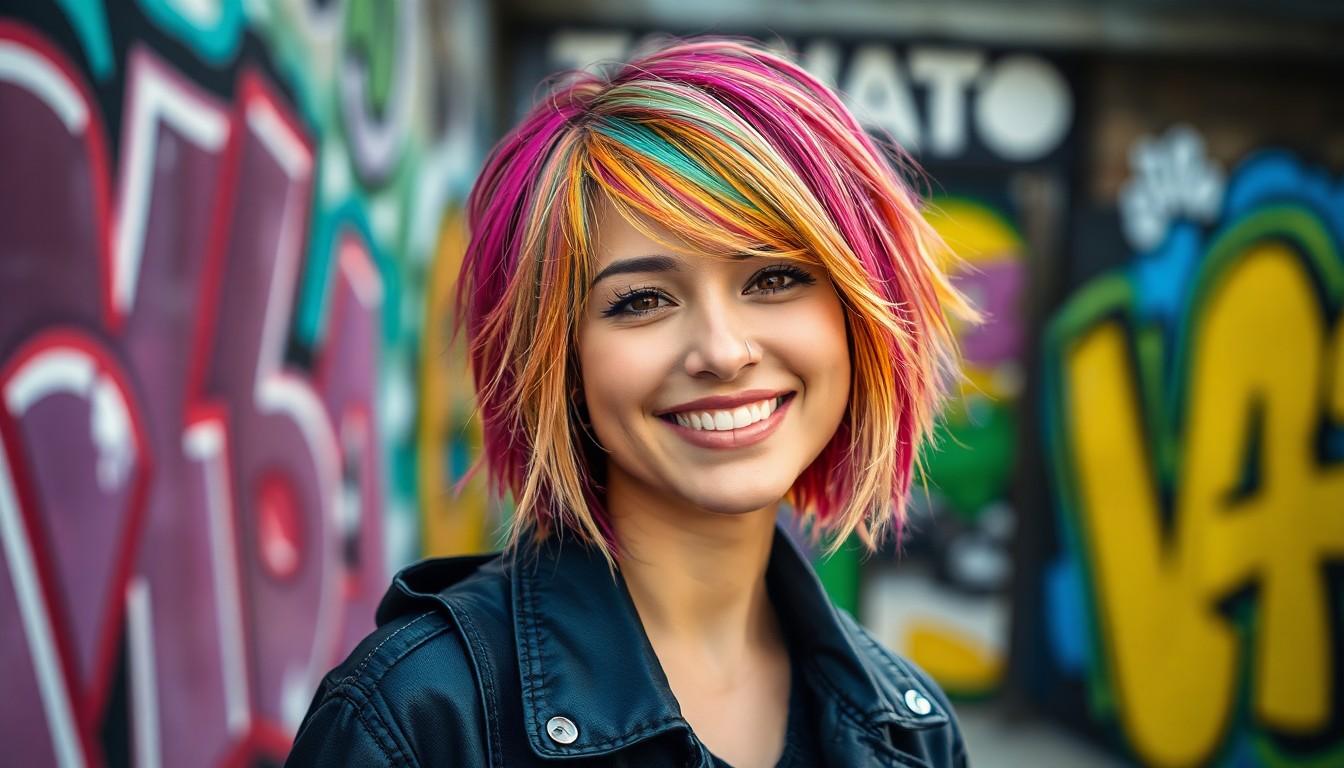
Finding a scene haircut that matches our face shape makes all the difference. Scene styles shine brightest when they flatter our unique features.
Selecting Haircuts For Round Faces
Scene hair can transform a round face by creating length and highlighting cheekbones. Pixie cuts or layered lobs work wonders because they lift at the crown and add sharp angles. We always add layers starting above the jawline since they visually elongate our face. Choosing cuts that end wider than our face only emphasizes roundness, so we avoid those for a sleeker look.
Finding Fits For Oval And Long Faces
Oval faces enjoy the most flexibility with scene hair—almost every dramatic style looks great. A blunt bob with face-framing pieces or a shoulder-length cut with soft layers adds volume without stretching the face shape further. High ponytails and side-swept bangs open up our features, letting balanced proportions stand out. For long or rectangle faces, we like to focus on styles that bring width rather than height—jawline layers and multiple textures do the trick. Skipping too much volume up top helps keep the look harmonious and edgy.
Creating Scene Hair Style At Home: Step-By-Step Guide
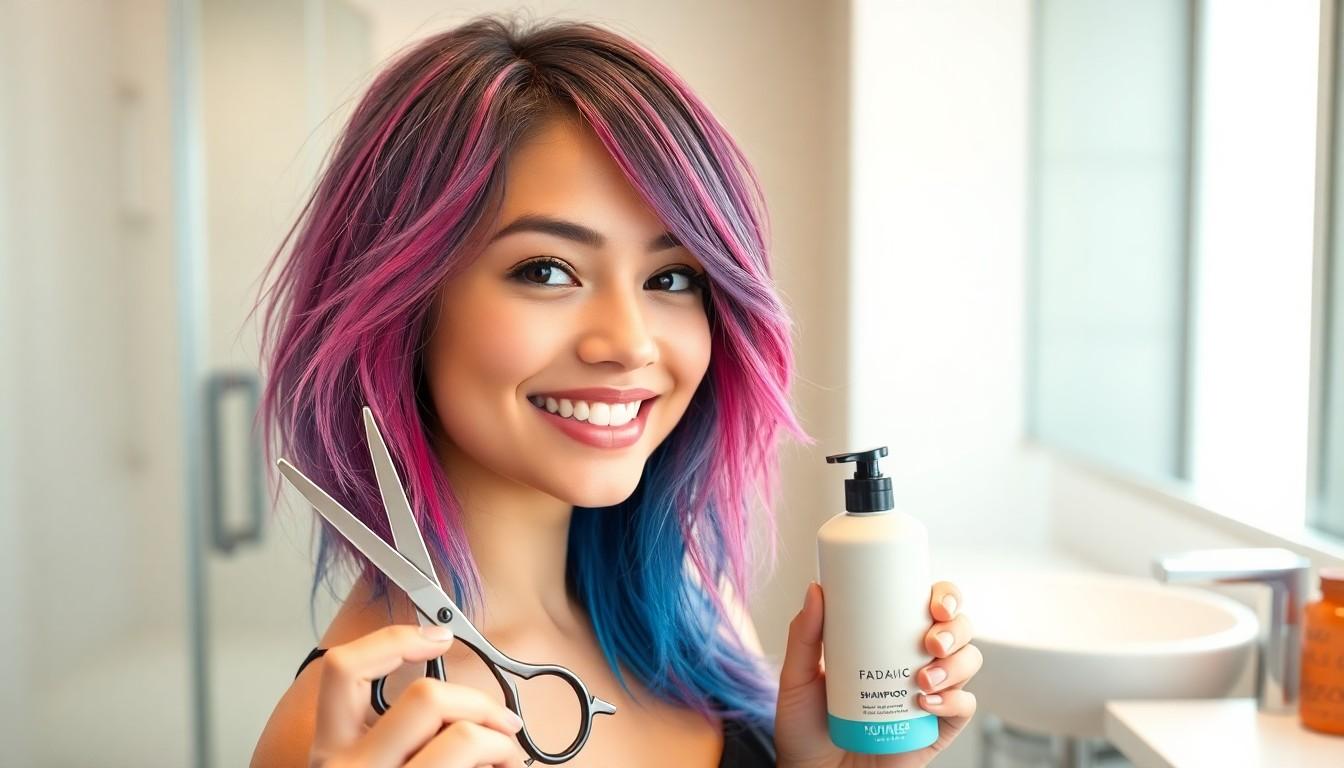
Let’s jump into how we can create a killer scene hair style right at home. All it takes is a little prep, some bold cutting, and vibrant color choices.
Prepping Hair For Scene Styling
We always start with the right kind of hair—scene styles need bold, dramatic texture, so choosing a lace front wig or real hair that can handle styling is key if we aren’t working with our natural hair. Clean hair is our best foundation, so we wash and condition thoroughly before grabbing any styling tools. Using volumizing shampoo helps pump up our roots, and a solid texturizing spray makes layering easier. That way, when we finish, strong-hold hairspray keeps every spike and sweep locked in place.
Cutting Choppy Layers And Bangs
We want those iconic choppy layers, so we grab thinning scissors or hair shears to cut texture and boost volume. Pulling the hair out and snipping in small increments lets us build uneven layers that look chaotic but totally curated. Next, we focus on the bangs—scene styles almost always feature long, side-swept bangs with a sharp gradient. Cutting the front shorter and letting the length fall toward the back creates that signature messy but styled appearance. Backcombing and teasing each section after cutting makes choppy layers really stand out.
Dyeing And Coloring Techniques For Scene Hair
Scene hair isn’t complete without bold, brave colors. We love using streaks of neon pink, electric blue, and saturated black to create maximum contrast. To make bright colors pop, we’ll sometimes bleach sections before applying dye. Semi-permanent or permanent colors work, depending on how long we want the look to last. Streaking or foiling methods give multi-dimensional highlights, so painting hues directly onto different layers helps us customize the vibe. Layering color and texture at once lets us capture that edgy, vibrant scene energy right at home.
| Step | Product/Tool Example | Purpose |
|---|---|---|
| Prep | Volumizing shampoo | Boosts volume and cleans hair |
| Cut | Thinning scissors, shears | Adds textured, choppy layers |
| Color | Neon dyes, bleach | Achieves bold, scene-worthy contrasts |
| Style | Texturizing spray, hairspray | Holds shape and adds gritty texture |
Mastering Styling Techniques For Scene Hair
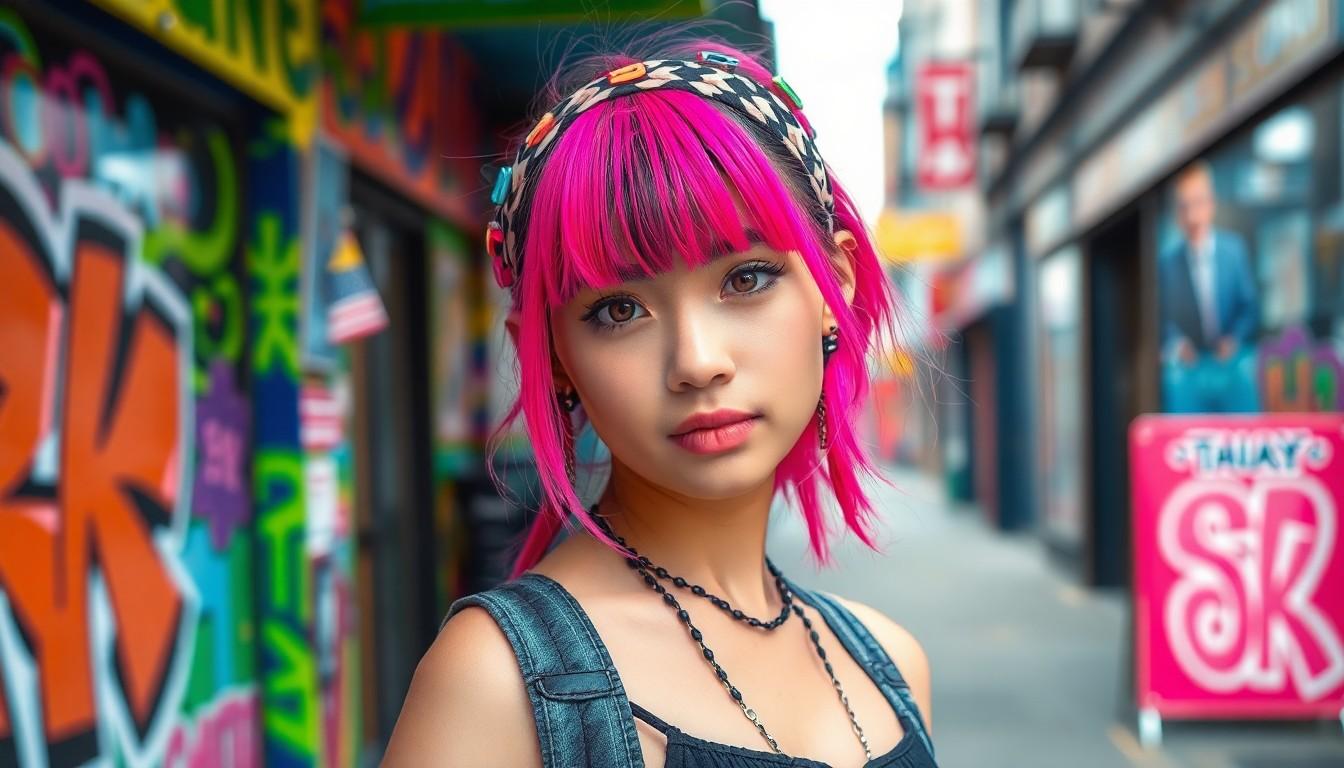
Let’s get down to the secret sauce for building that scene hair volume and finishing everything with attitude. Every detail matters when it comes to shaping those eye-catching, chaotic layers into something signature.
Teasing And Backcombing For Volume
We always start by building massive volume at the roots. Teasing—using a teasing comb or brush—lets us lift the top layers and bangs for that iconic, piecey look. We section off small pieces and brush them upward, focusing on the crown and frame to maximize lift. Backcombing works wonders too. Running a fine-tooth comb in quick, downward strokes from the tip toward the scalp, we add thickness and gritty texture right where scene hair needs it. These techniques anchor the structured chaos of scene styles, especially when our base haircut already has razor-cut or thinned-out layers for separation.
Using Hair Accessories To Complete The Look
Scene hair really comes alive with bold accessories, so we never skip this step. Hair clips and pins secure stray hairs or add instant color by snapping in bright extensions—think neon pink or green clips for that classic scene pop. Another smart trick is to slip on a thin headband or bandana. This pulls the look together, keeps hair out of the face, and shows off our choppy bangs or bold color sections. For days when we tie up the longer layers or shape a mullet-inspired silhouette, we rely on scrunchies and hair ties in bright, patterned fabrics. These little details turn simple DIY styles into complete, statement-making scene looks, ensuring our hair stands out from every angle.
Maintaining And Caring For Scene Hair Style
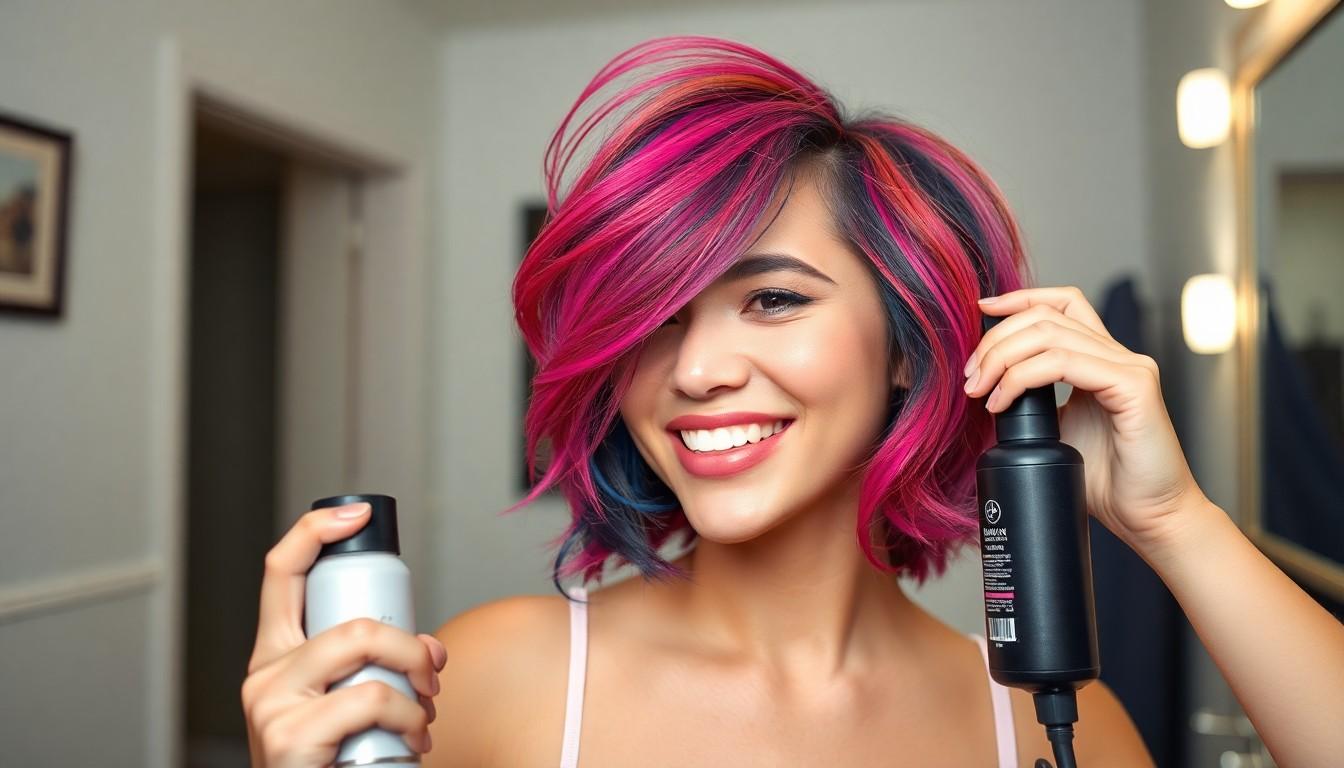
Taking care of our scene hair style really pays off when we want those colors and layers to stay bold and healthy. Every detail counts, whether we’re fighting against split ends or keeping our neon streaks fresh.
Protecting Colored And Bleached Hair
Vibrant colors and bleached sections need special attention if we want our signature look to last. We usually touch up bleached roots every three months, especially if our natural color peeks through quickly. Using color-protecting shampoos and conditioners helps maintain the intensity and shine in our dyed hair. Products like Garnier Fructis Daily Care keep everything hydrated and strong. Toning every 4-6 weeks makes a difference, stopping brassiness before it starts and locking in that perfect shade. Regular trims every three months minimize split ends and keep our layers looking sharp, especially when hair’s been through heavy styling or coloring.
Preventing Damage From Styling Tools
Heat tools are part of almost every scene routine, but protecting our hair from damage takes priority. Spraying on a heat protectant before using a straightener or blow dryer helps shield every strand. Lower heat settings and skipping heat styling days whenever possible makes our hair more resilient over time. We favor gentle styling, reaching for wide-tooth combs or detangling brushes, especially when working with wet hair. Avoiding harsh brushing keeps breakage to a minimum. We also add leave-in conditioners, deep treatments, and nourishing masks regularly so our hair stays ready for any style change, no matter how dramatic.
Drawing Inspiration From Scene Icons And Influencers
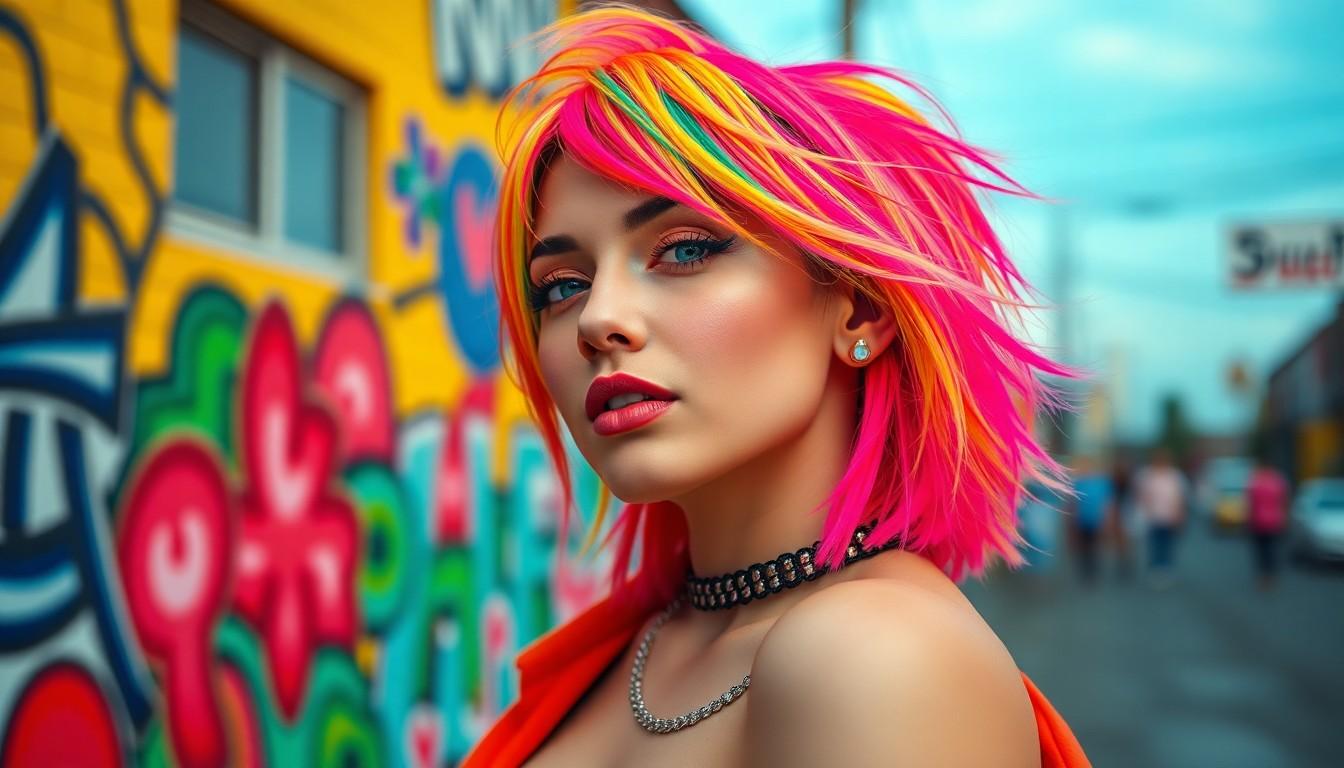
Sometimes the best ideas come straight from the originators themselves. We can tap into endless inspiration from scene icons, music artists and bold social media personalities who pioneered the look.
Following Social Media Scene Stars
We can scroll through Instagram, TikTok and Pinterest to track the latest scene trends. These platforms overflow with images and videos from current scene influencers—think stylists with neon streaks, creators boasting sky-high volume, and everyday fans showing off their DIY chops. Scene stars on YouTube walk us through their exact routines, breaking down everything from choppy razor cuts to wild color combos in real time. Pinterest lets us pin reference photos, step-by-step guides, and mashup boards of short, wavy or curly scene hair for quick salon inspiration. People like Jeffree Star and Hanna Beth built their reputations online with bold layered hair and unexpected color choices, so following their profiles or searching their hashtags gives us a direct line to new takes on classic scene style.
Recreating Celebrity Scene Hairstyles
We start by studying our favorite scene icons—My Chemical Romance, Panic At The Disco, and Fall Out Boy lead the charge. Analyzing their signature looks reveals essentials like boldly layered cuts, vibrant color blocks and exaggerated side-swept bangs that defined the early 2000s scene. Next, we grab tutorials on YouTube or Pinterest that break down how to match those exact techniques for layering and fringe. Many guides even explain how to get that cohesive blend, emphasizing the particular shapes and color transitions that make the hairstyle pop. Whenever we feel unsure, a visit to a knowledgeable stylist helps us recreate celeb-inspired cuts in a way that’s customized to our face shape and hair texture, maximizing both accuracy and impact.
Conclusion
Scene hair invites us to break the mold and celebrate our individuality with every bold cut and splash of color. It’s more than just a hairstyle—it’s a creative journey that lets us express our personalities and connect with a vibrant community. Whether we’re drawing inspiration from icons or experimenting with new trends, embracing scene hair means making a fearless statement that’s uniquely ours.
Frequently Asked Questions
What is scene hair?
Scene hair is a bold hairstyle characterized by vibrant colors, choppy layers, and dramatic bangs. It originates from early 2000s alternative youth culture and is known for its eye-catching, creative, and expressive appearance.
How is scene hair different from emo hair?
Scene hair uses brighter, more vivid colors and incorporates choppy, voluminous layers. Emo hair tends to focus on darker shades and sleeker, less voluminous cuts. Scene hair is generally more playful and diverse in color.
What are the key features of scene hair?
Key features include neon or contrasting hair colors, choppy layers for volume, long side-swept bangs, and often extensions for extra fullness. Accessories like colorful clips and headbands also help complete the look.
Can scene hair work with any face shape?
Yes! Scene hair can be tailored to suit any face shape. Stylists recommend specific cuts—like layered bobs for round faces or jawline layers for long faces—to enhance natural features while keeping the edgy scene style.
How do I achieve scene hair at home?
Start with clean, voluminous hair. Cut choppy layers and side-swept bangs with thinning scissors, use bold dyes for color, and style with teasing or backcombing for volume. Always use the right products to protect and maintain your hair.
What products should I use for maintaining scene hair?
Use color-protecting shampoos and conditioners, heat protectants, and volumizing sprays. Regular trims keep split ends at bay, while toning and conditioning protect color vibrancy and overall hair health.
How often should I touch up my scene hair color?
It’s best to touch up vibrant colors and bleached sections every 4-6 weeks to keep them looking fresh and bold. Regular maintenance helps preserve the style and prevents fading.
How can I prevent damage to my scene hair?
Use heat styling tools on the lowest setting, always apply heat protectant, and avoid over-processing. Moisturizing treatments and gentle handling will help keep hair healthy despite frequent coloring and styling.
Where can I find inspiration for scene hair styles?
Check platforms like Instagram, TikTok, Pinterest, and YouTube for tutorials, inspiration, and the latest trends. Following scene influencers, band members, and stylists can help you find new ideas and techniques.
Do I need a professional stylist to get scene hair?
While it’s possible to achieve scene hair at home with the right tools and tutorials, visiting a stylist experienced with choppy layers and bold coloring can help you get the best, most customized results.

